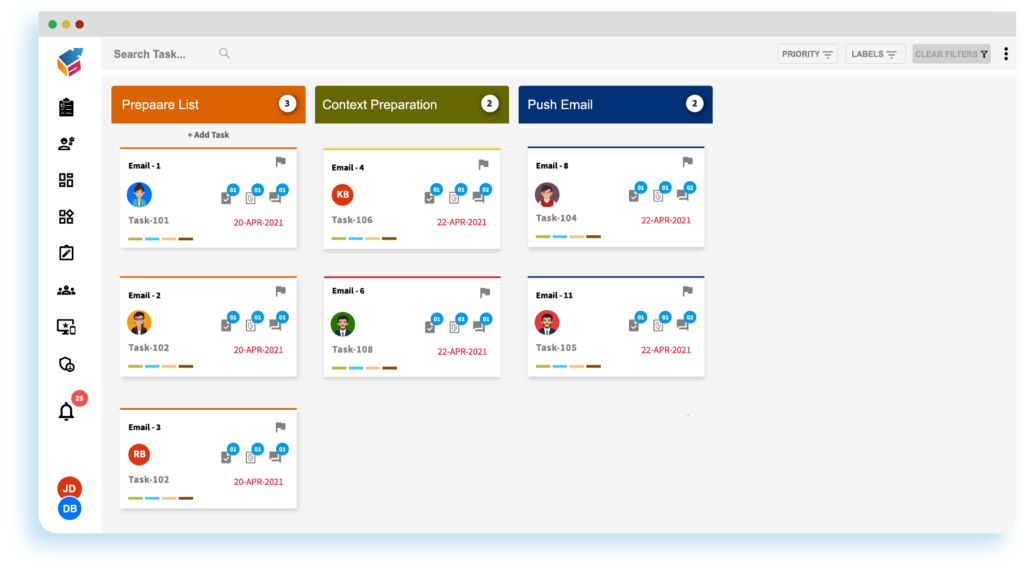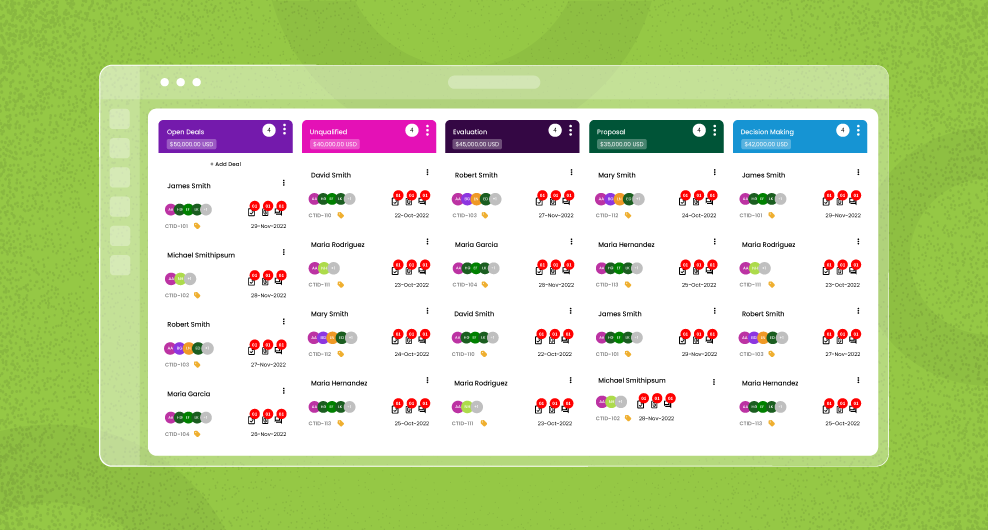If you have a difficult time selling your products online, ignore that difficulty by creating a short sales process. A concise, understandable sales funnel will allow your customers to make the purchase quickly and easily.
Introduction to sales funnel
A sales funnel, also known as a marketing funnel or buying funnel, is a path that leads prospective customers to make a purchase from your company. This strategic process involves sales management, funnel marketing, conversion funnel, marketing funnels, sales funnel stages, and effectively nurturing sales leads to guide them through each stage of the purchasing journey
What are the 4 stages of the sales funnel?
There are four essential stages of a sales funnel, which are Awareness, Interest, Decision, and Action.

Awareness: In this stage, potential customers are made aware of your product or service. This can be done through marketing initiatives such as advertising, public relations, or content marketing.
Interest: Once potential customers are aware of your product or service, they will start to develop an interest in it. This can be done by providing more information about the product or service, such as through blog posts, case studies, or free trials.
Decision: In this stage, potential customers make a decision on whether to purchase your product or service. This decision is usually based on factors such as price, features, and benefits.
Action: In the final stage of the sales funnel, potential customers take action and purchase your product or service.
What is simple sales funnel?
Sales funnels are often thought of as complex, but they can be simplified with the help of sales automation software. A sales funnel is simply a way to track and measure the journey a customer takes from awareness to purchase. By understanding the steps in a sales pipeline, businesses can better design their marketing and sales strategies to convert more leads into customers.
The typical sales funnel has four stages: awareness, interest, decision, and action. Each stage represents a different level of engagement with your product or service.
Types of sales funnels
There are four main types of sales funnels, which are distinguished by the stages in the customer journey:
- The awareness stage funnel
- The consideration stage funnel
- The decision stage funnel
- The loyalty stage funnel
The awareness stage funnel is designed to reach out to potential customers who may not be aware of your product or service. The key metric for this stage is reach, or the number of people who see your message.
The consideration stage funnel is designed to nurture leads and help them move closer to a purchase decision. The key metric for this stage is engagement, or the level of interaction that potential customers have with your brand.
The decision stage funnel is designed to guide potential customers through the final stages of the purchase process. The key metric for this stage is conversion, or the percentage of people who take the desired action (e.g., make a purchase).
The loyalty stage funnel is designed to keep existing customers engaged with your brand and encourage them to become repeat buyers. The key metric for this stage is retention, or the percentage of people who continue to use your product or service over time.
Marketing strategies for scaling incom
The first step is to create a plan.
What are your goals?
How much revenue do you want to generate?
What are your target markets?
Who are your ideal customers?
Once you know these things, you can begin to develop a marketing strategy that will help you reach your income goals.
There are a number of different marketing strategies you can use to scale your income. Here are a few of the most popular:
Content marketing: Creating and sharing helpful, valuable content is a great way to attract attention and interest from potential customers. You can share blog posts, infographics, videos, and more across social media and other channels to reach your audience.
Email marketing: Email is still one of the most powerful tools for marketing. You can use email newsletters, automated sequences, and other strategies to nurture leads and convert them into paying customers.

Social media marketing: Social media platforms like Facebook, Twitter, and LinkedIn offer vast opportunities for promoting your business and reaching new audiences. You can use these platforms to share your content, interact with potential customers, and build relationships.

Pay-per-click advertising: Paid advertising is an effective way to reach people who are already interested in what you have to offer. You can use Google AdWords or other PPC platforms to place ads on relevant websites and search engine results pages (SERPs).
How do you optimize a sales funnel?
Sales funnels are often complex and convoluted, making it difficult to determine where potential customers are getting stuck. By optimizing your sales funnel and automating process, you can identify and address bottlenecks, improving the customer experience and increasing conversions.
There are a few key areas to focus on when optimizing your sales funnel:
The top of the funnel: This is the first interaction that potential customers have with your brand. Make sure that your messaging is clear and that you are providing value from the start.
The middle of the funnel: This is where most potential customers get stuck. Identify any friction points and make changes to remove them.
The bottom of the funnel: This is the final step before conversion. Make sure that your call-to-action (CTA) is clear and that there are no barriers to conversion.
By optimizing your sales funnel, you can improve the customer experience, increase conversions, and grow your business.
Which part of the sales funnel has the most users?
The answer may vary depending on who you ask, but we believe that the middle of the sales funnel has the most users. The middle of the funnel is where most people are in the process of deciding whether or not to make a purchase. It’s also where they are comparing different products and services to find the best fit for their needs.
Conclusion
A sales funnel doesn’t have to be complicated. By following these simple tips, you can streamline your sales process and make it more effective with sales templates. Start by identifying your target audience and then creating content that speaks to their needs. Once you’ve attracted them to your website, make it easy for them to buy from you by providing clear call-to-actions and removing any obstacles in their way. Finally, follow up with your customers after they purchase to ensure they’re satisfied and to build long-term relationships.
If you simplify your sales funnel using Yoroflow’s sales automation software, you’ll be able to close more deals and keep your customers coming back for more.




